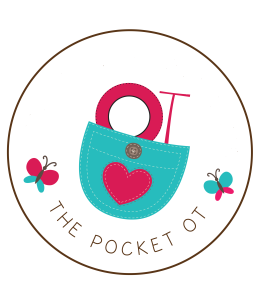

WORK for the mouth?
Well, not really! As babies, we learn to calm ourselves through sucking. When a baby suckles, he begins to develop methods to regulate and organize. Additionally, sucking helps to develop speech patterns and helps to develop/mature the central nervous system! However, not all babies can use sucking in these wonderful ways.
For many children with Sensory Processing Disorder, developmental disabilities, or cleft palate, sucking is difficult or is not a preferred activity. Their bodies NEED this activity, but due to extra sensitivity to various tastes and textures OR weak muscles, sucking may be hard to do or even uncomfortable. As their bodies grow, they crave the input and they place objects into their mouths after it’s age-appropriate to do so.
Everyone needs “input” in the form of chewing. When we’re stressed, we may eat food, chew on ice, or gum, suck on cigarettes, etc. It’s true that we continue to use chewing and sucking to organize our bodies as adults! Pound for pound, one of the strongest muscles in our body is the masseter. (Yes, anatomy geek here!)
In my book The Parent’s Guide to Occupational Therapy for Special Needs, I discuss this and more of the “whys” in much more detail.)
There are many fun ways to incorporate oral-motor “heavy work” into your child’s day.
The activities you choose should be fun for your child! The most important consideration is to choose an activity in which your child is SUCCESSFUL and then make it more difficult as his muscles get stronger. You wouldn’t want to begin your first-ever gym session by lifting a 100-lb weight!
 Here are a few fun ‘Out of the POCKET’ tips to try:
Here are a few fun ‘Out of the POCKET’ tips to try:1) Use a straw to blow a cotton ball or small pom-pom. Vary the sizes of straws or use “silly straws” to make this activity more challenging. Ask your child to draw a maze on a large sheet of paper and blow the cotton ball from start to finish!
 |
| My son demonstrates this for older kids. |
2) Blow bubbles into a dishpan of water with liquid soap. Watch your little one laugh when the bubbles form in the water as a result of their hard work of blowing! *Of course, make sure they don’t drink the water 😉 You can make small holes in the straws so that the water doesn’t move as quickly to the mouth. Add food color and scents to make it a dynamic sensory experience!
3) Hold cotton balls in your hand or place them on the edge of the table and encourage kids to blow them off. Make silly sounds as each hits the floor!
4) Whistles of all sizes are fun, each differently shaped whistle changes the muscles used by the mouth, so be sure to provide a variety of sizes for super great exercise. I find SO many types at my local dollar or party store!
5) Sucking on frozen drinks of different flavors is a super activity. We like making frozen fruit slushes. Try many different flavors to provide taste experiences.
6) Use pixie-sticks candy and place its contents around the child’s mouth in different places, allowing the child to use only his tongue to lick it off in front of a mirror. Whipped crème, sugar-free jam, and flavored syrups are other ideas. Use a mirror and do it together!
7) Straws of different sizes can be placed into your child’s favorite drinks. **REMEMBER** The smaller the straw, the harder the oral muscles will work to get the air out. Begin with a larger, straighter straw and work down to a smaller, curvier one.
 Looking for more ideas for sensory, brain breaks, and breathing exercises? We have the perfect thing for you….200 cards to print and use immediately!
Looking for more ideas for sensory, brain breaks, and breathing exercises? We have the perfect thing for you….200 cards to print and use immediately!
8) Use a vibrating toothbrush. Therapists recommend using vibration to ‘wake up’ the mouth. There are many different types available readily in stores or on Amazon. Try different flavors of toothpaste too. Remember that our senses need stimulation and mixing things up sometimes adds the extra sensory input we need.
Share your favorite tips for oral-motor sensory work. We love hearing from you!

PS Are you a busy therapist with no time to spare? No more planning. No more searching for the perfect activity or worksheet.


